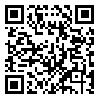BibTeX | RIS | EndNote | Medlars | ProCite | Reference Manager | RefWorks
Send citation to:
URL: http://refahj.uswr.ac.ir/article-1-2114-en.html
All simple methods of the measurement of poverty, such as ratio of the poor in total population and income gap are in fact unable to reflect inter-transformation society, with respect to change in money making groups, income transformation, gathering of the social groups, symmetry, asymmetry (dependency of the index to the other specification of the individuals in the society), monotonicity, social welfare, social justice etc. Therefore, these indices are weak and deficient to show dynamism of the poverty. the more complicated indices that started to introduce from Sen work, reflect The income distribution circumstance and income ranking and some of them are admitted to Gini coefficient. Nearly fifteen such principal indices that apply income distribution content and income transformation, poverty line and distribution among the poor are recognized. Some of these indices deal with social welfare, which is not a calculable issue. However the total number of secondary and/or related indices are amounted to more than seventy. Selecting a proper index for every society relies on data access, the structure and distribution of the population and the income of the society under consideration, the goals of planning as well as policy making and finally choosing the researcher. In this article I have analyzed the ability and power of the main indices, with special regard to Iran situation. To accomplish this fact, I have introduced a nine-item principles that are necessary in index, Then I introduced analyzed the sen, Kakwani Takayama and some other indices. Finally, bringing Iran poverty and income distribution condition into consideration, I have represented a propose index as the geometric mean of the third Kakwani's and the first sen indices. Using Some appraises and non-parametric estimate as well as official data for Iran, I have calculated the poverty index of the country. This index is considered as a high index with respect to percupita income of the country.
Received: 2015/09/10 | Accepted: 2015/09/10 | Published: 2015/09/10
| Rights and permissions | |
 |
This work is licensed under a Creative Commons Attribution-NonCommercial 4.0 International License. |





